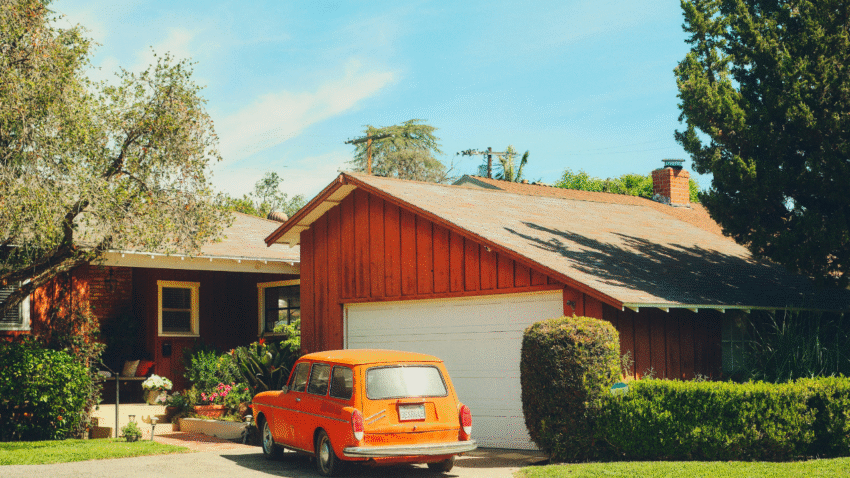Introduction
Good lighting above your garage door isn’t just about curb appeal—it’s about safety, security, and convenience. Installing an exterior light can help illuminate your driveway, make nighttime arrivals safer, and deter potential intruders. Learning how to install an outdoor light above a garage door is a manageable DIY project if you follow proper safety guidelines and use the right tools.
Why Installing an Outdoor Garage Light Matters
An exterior light above your garage door offers multiple benefits:
- Improved Safety – Reduces tripping hazards when walking to and from your garage at night.
- Enhanced Security – Bright light discourages trespassers and makes it easier to spot suspicious activity.
- Better Visibility – Makes parking and unloading vehicles easier after dark.
- Boosted Curb Appeal – Stylish fixtures can enhance the appearance of your home’s exterior.
Whether you choose a motion-sensor, dusk-to-dawn, or manual switch-controlled fixture, proper installation ensures the light works reliably and safely.
Step-by-Step Guide to Installing an Outdoor Light Above a Garage Door
1. Check Local Codes and Safety Requirements
Before starting, confirm that installing an exterior light is allowed under local building codes and that you understand the electrical requirements. If you’re uncomfortable working with wiring, hire a licensed electrician.
2. Gather Your Tools and Materials
- Outdoor-rated light fixture
- Outdoor-rated electrical box and cover plate
- Exterior-grade wiring (e.g., 14/2 or 12/2 with ground, depending on circuit)
- Wire nuts and electrical tape
- Drill and bits
- Screwdrivers (flathead and Phillips)
- Voltage tester
- Caulk and caulk gun (for sealing)
- Ladder
- Safety goggles and gloves
Optional: Motion sensor or photocell adapter if your fixture doesn’t include one.
3. Turn Off Power to the Circuit
Locate your home’s electrical panel and switch off the breaker controlling the garage’s exterior wall wiring. Use a voltage tester to confirm that the power is off before touching any wires.
4. Determine the Light Location
The ideal spot is centered horizontally above the garage door, high enough to spread light evenly across the driveway but not so high that it looks awkward. Mark the location for the electrical box, ensuring it’s mounted on a solid surface such as wood sheathing or siding.
Tip: If you already have an outdoor light near the garage, you may be able to run wiring from that circuit.
5. Install the Electrical Box
- Drill a hole through the siding or wall at your marked location, sized to fit your electrical box and wiring.
- Insert the electrical box into the hole and secure it according to manufacturer instructions. Use an exterior-rated box for weather resistance.
6. Run the Electrical Wiring
If wiring is not already present:
- Plan your wiring route from an existing power source or switch.
- Feed the wire through the wall into the back of the electrical box.
- Use cable staples to secure the wire inside the garage, following code requirements for spacing and protection.
Safety Note: All outdoor wiring must be rated for exterior use and protected from physical damage.
7. Connect the Light Fixture
- Strip about 3/4 inch of insulation from the ends of the wires.
- Connect the fixture wires to the house wiring:
- Black to black (hot wire)
- White to white (neutral wire)
- Green or bare copper to green or bare copper (ground wire)
- Twist connections with wire nuts and wrap with electrical tape for extra security.
8. Mount the Fixture
- Attach the fixture mounting bracket to the electrical box.
- Position the light fixture over the bracket and secure it with screws.
- Ensure all wiring is tucked neatly inside the box to avoid pinching.
9. Seal the Edges
Use an exterior-grade caulk to seal around the electrical box and fixture base to prevent water from entering. This is especially important above a garage door where rain and wind exposure is high.
10. Restore Power and Test
Switch the breaker back on and test the light. If it’s motion-activated, adjust sensitivity and range settings. If it’s on a switch, verify that it turns on and off properly.
Common Mistakes to Avoid
- Skipping the Power Check
- Problem: Risk of electrical shock.
- Solution: Always confirm power is off with a voltage tester.
- Using Indoor-Rated Fixtures or Wiring
- Problem: Short circuits or fixture failure due to weather exposure.
- Solution: Use only outdoor-rated equipment.
- Improperly Sealing the Fixture
- Problem: Water intrusion causing damage.
- Solution: Seal all gaps with weatherproof caulk.
- Overloading the Circuit
- Problem: Breaker trips or wires overheat.
- Solution: Ensure the new light doesn’t exceed the circuit’s capacity.
- Poor Fixture Placement
- Problem: Shadows or uneven lighting.
- Solution: Center the fixture and choose an appropriate mounting height.
Extra Garage Tips & Hacks
- Use LED Bulbs – They last longer, consume less energy, and perform well in cold temperatures.
- Add a Motion Sensor Upgrade – Even if your light doesn’t come with one, many can be retrofitted with a sensor.
- Install Matching Fixtures – If you have side entry doors or multiple garage doors, matching lights create a cohesive look.
For more exterior upgrade ideas, check out our guide on how to weatherproof your garage for winter, which pairs perfectly with new outdoor lighting.
Conclusion
Installing an outdoor light above your garage door improves safety, boosts your home’s curb appeal, and increases nighttime visibility. With the right tools, materials, and a focus on safety, you can complete this project in a few hours and enjoy the benefits for years.
Pro Tip: Choose a fixture style that complements your home’s architecture, and pair it with a dusk-to-dawn sensor for automatic operation. Bookmark this guide so you can follow it step-by-step when you’re ready to brighten up your garage exterior.
